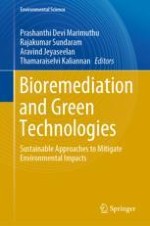2021 | OriginalPaper | Chapter
Insights into the Status of Heavy Metal Resistant Rhizobacterial Communities in the Heavy Metal Contaminated Sites
Authors : Karthikeyan KirupaSree, Vijay Karuppiah, Sathiamoorthi Thangavelu, Kavitha Thangavel
Published in: Bioremediation and Green Technologies
Publisher: Springer International Publishing
Activate our intelligent search to find suitable subject content or patents.
Select sections of text to find matching patents with Artificial Intelligence. powered by
Select sections of text to find additional relevant content using AI-assisted search. powered by
